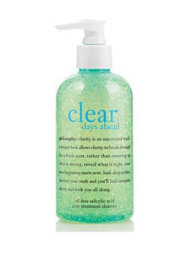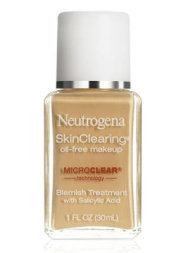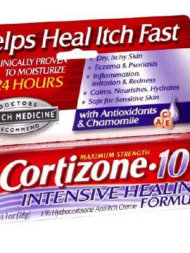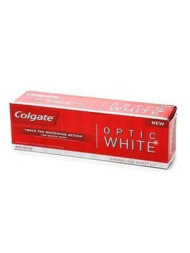Foods that Trigger Stroke
Few things
feel more terrifying and random than a stroke, which can strike without
warning. And fear of stroke—when a blood vessel in or leading to the
brain bursts or is blocked by a blood clot, starving brain cells of
oxygen and nutrients—is well founded. After all, stroke is the
number-three killer in the U.S., affecting more than 700,000 people each
year. Here are five foods that cause the damage that leads to stroke.
1. Crackers, chips, and store-bought pastries and baked goods

Muffins,
doughnuts, chips, crackers, and many other baked goods are high in trans
fats, which are hydrogenated oils popular with commercial bakeries
because they stay solid at room temperature, so the products don't
require refrigeration. Also listed on labels as "partially hydrogenated"
or hydrogenated oils, trans fats are found in all kinds of snack foods,
frozen foods, and baked goods, including salad dressings, microwave
popcorn, stuffing mixes, frozen tater tots and French fries, cake mixes,
and whipped toppings. They're also what makes margarine stay in a solid
cube. The worst offenders are fried fast foods such as onion rings,
French fries, and fried chicken.
Why it's bad: For
years scientists have known trans fats are dangerous artery-blockers,
upping the concentrations of lipids and bad cholesterol in the blood and
lowering good cholesterol. Now we can add stroke to the list of
dangers. This year researchers at the University of North Carolina found
that women who ate 7 grams of trans fat each day -- about the amount in
two doughnuts or half a serving of French fries—had 30 percent more
strokes (the ischemic type, caused by blocked blood flow to the brain)
than women who ate just 1 gram a day. Another recent study, also in
women, found that trans fats promoted inflammation and higher levels of
C-reactive protein, which have been linked to an increased risk of
diabetes, heart disease, and stroke.
What to do: Aim
to limit trans fats to no more than 1 or 2 grams a day -- and
preferably none. Avoid fast-food French fries and other fried menu items
and study packaged food labels closely. Even better, bake your own
cookies, cakes, and other snacks. When you can't, search out
"health-food" alternative snacks, such as Terra brand potato chips and
traditional whole grain crackers such as those made by Finn, Wasa,
AkMak, Ryvita, and Lavasch.
2. Smoked and processed meats

Whether your
weakness is pastrami, sausage, hot dogs, bacon, or a smoked turkey
sandwich, the word from the experts is: Watch out.
Why it's bad: Smoked
and processed meats are nasty contributors to stroke risk in two ways:
The preserving processes leave them packed with sodium, but even worse
are the preservatives used to keep processed meats from going bad.
Sodium nitrate and nitrite have been shown by researchers to directly
damage blood vessels, causing arteries to harden and narrow. And of
course damaged, overly narrow blood vessels are exactly what you don't
want if you fear stroke.
Many studies have linked processed meats
to coronary artery disease (CAD); one meta-analysis in the journal
Circulation calculated a 42-percent increase in coronary heart disease
for those who eat one serving of processed meat a day. Stroke is not the
only concern for salami fans; cancer journals have reported numerous
studies in the past few years showing that consumption of cured and
smoked meats is linked with increased risk of diabetes and higher
incidences of numerous types of cancer, including leukemia.
What to do: If
a smoked turkey or ham sandwich is your lunch of choice, try to vary
your diet, switching to tuna, peanut butter, or other choices several
days a week. Or cook turkey and chicken yourself and slice it thin for
sandwiches.
3. Diet soda

Although
replacing sugary drinks with diet soda seems like a smart solution for
keeping weight down—a heart-healthy goal—it turns out diet soda is
likely a major bad guy when it comes to stroke.
Why it's bad: People
who drink a diet soda a day may up their stroke risk by 48 percent. A
Columbia University study presented at the American Stroke Association's
2011 International Stroke Conference followed 2,500 people ages 40 and
older and found that daily diet soda drinkers had 60 percent more
strokes, heart attacks, and coronary artery disease than those who
didn't drink diet soda. Researchers don't know exactly how diet soda ups
stroke risk—and are following up with further studies—but nutritionists
are cautioning anyone concerned about stroke to cut out diet soda pop.
What to do: Substitute
more water for soda in your daily diet. It's the healthiest
thirst-quencher by far, researchers say. If you don't like water, try
lemonade, iced tea, or juice.
4. Red meat

This winter,
when the respected journal Stroke published a study showing that women
who consumed a large portion of red meat each day had a 42-percent
higher incidence of stroke, it got nutrition experts talking. The
information that red meat, with its high saturated fat content, isn't
healthy for those looking to prevent heart disease and stroke wasn't
exactly news. But the percentage increase (almost 50 percent!) was both
startling and solid; the researchers arrived at their finding after
following 35,000 Swedish women for ten years.
Why it's bad: Researchers
have long known that the saturated fat in red meat raises the risk of
stroke and heart disease by gradually clogging arteries with a buildup
of protein plaques. Now it turns out that hemoglobin, the ingredient
that gives red meat its high iron content, may pose a specific danger
when it comes to stroke. Researchers are investigating whether blood
becomes thicker and more viscous as a result of the consumption of
so-called heme iron, specifically upping the chance of strokes.
What to do: Aim
to substitute more poultry—particularly white meat—and fish, which are
low in heme iron, for red meat. Also, choose the heart-healthiest
sources of protein whenever you can, especially beans, legumes, nuts,
tofu, and nonfat dairy.
5. Canned soup and prepared foods

Whether it's
canned soup, canned spaghetti, or healthy-sounding frozen dinners,
prepared foods and mixes rely on sodium to increase flavor and make
processed foods taste fresher. Canned soup is cited by nutritionists as
the worst offender; one can of canned chicken noodle soup contains more
than 1,100 mg of sodium, while many other varieties, from clam chowder
to simple tomato, have between 450 and 800 mg per serving. Compare that
to the American Heart and Stroke Association's recommendation of less
than1,500 mg of sodium daily and you'll see the problem. In fact, a
nutritionist-led campaign, the National Salt Reduction Initiative, calls
on food companies to reduce the salt content in canned soup and other
products by 20 percent in the next two years.
Why it's bad: Salt,
or sodium as it's called on food labels, directly affects stroke risk.
In one recent study, people who consumed more than 4,000 mg of sodium
daily had more than double the risk of stroke compared to those who ate
2,000 mg or less. Yet the Centers for Disease Control estimate that most
Americans eat close to 3,500 mg of sodium per day. Studies show that
sodium raises blood pressure, the primary causative factor for stroke.
And be warned: Sodium wears many tricky disguises, which allow it to
hide in all sorts of foods that we don't necessarily think of as salty.
Some common, safe-sounding ingredients that really mean salt:
- Baking soda
- Baking powder
- MSG (monosodium glutamate)
- Disodium phosphate
- Sodium alginate
What to do: Make
your own homemade soups and entrees, then freeze individual
serving-sized portions. Buy low-sodium varieties, but read labels
carefully, since not all products marked "low sodium" live up to that
promise.



![[Photo: © ACE]](http://l1.yimg.com/bt/api/res/1.2/wPuZo_py1fdEhbtgkDkMEA--/YXBwaWQ9eW5ld3M7cT04NTt3PTMxMA--/http://media.zenfs.com/en/blogs/ymusic-heard/BeyonceKnowles-WithBlue071812.jpg)
































![[Photo: Twitter.com]](http://l1.yimg.com/bt/api/res/1.2/Ka1TeJAlMOJPkOY8sCgHAA--/YXBwaWQ9eW5ld3M7cT04NTt3PTMwMA--/http://media.zenfs.com/en/blogs/ymusic-stop-the-presses/LadyGagaFamePrintAd.jpg)












